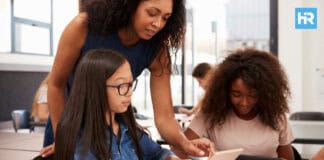Sandy Hook Beach has that rare ability to feel like an escape and a place that’s yours to explore.
It’s where locals and visitors find peaceful beaches, scenic trails, and a history that’s hard to resist.
In this guide, we’ll dive into everything that makes Sandy Hook special—from its sandy shores and hidden coves to its rich wildlife, dog-friendly spots, and the fascinating stories behind Fort Hancock and the lighthouse.
Let’s get to it.
Beaches That Suit Every Mood
Sandy Hook Beach has options, and I mean options.
Whether you’re here for the waves, a quiet bayside retreat, or a leash-free day with your dog, there’s a spot that feels just right.
With seven miles of coastline, the challenge isn’t finding a beach—it’s deciding which one to visit first.
North Beach and South Beach
These are the bread and butter of Sandy Hook.
North Beach is a quieter option, where you can set up your chair, dig your toes in the sand, and watch the waves without too much hustle.
It’s, for sure, a favorite for people who just want to unwind.
South Beach, on the other hand, has a bit more buzz—families, groups of friends, and kids chasing waves.
Both have lifeguards on duty during the summer, so swimming feels safer here than on some other parts of the shore.
Parking is close, which is always a bonus when you’re carrying half your house to the beach.
As you’ll see if you visit them, these are great spots for a classic Jersey Shore experience without the crowds of bigger beach towns.
Gunnison Beach
Yes, Gunnison Beach is New Jersey’s only clothing-optional beach, and that’s its claim to fame.
But it’s also one of the most beautiful spots on the peninsula.
Located at the northern tip, it offers panoramic views of the Atlantic on one side and Sandy Hook Bay on the other, with the NYC skyline hovering in the distance.
Even if you’re not planning to shed layers, it’s worth visiting for the vibe—friendly, laid-back, and a little different.
There’s something about Gunnison that feels like it’s doing its own thing, and that’s part of the charm.
Horseshoe Cove
On the bayside, Horseshoe Cove is where you go to escape.
The water here is calm and shallow, perfect for wading or sitting by the edge and letting the day float by.
Surrounded by marshes, it’s also a magnet for wildlife—herons, crabs, and the occasional kayaker drifting by.
This is where you might start with a quick walk along the shore and end up staying for hours without realizing it.
Sandy Hook’s Natural Wonders
Sandy Hook feels like a wild corner of New Jersey you weren’t expecting.
Between the marshes, forests, and shorelines, it’s a place where nature unfolds differently depending on when you visit.
What’s Happening Each Season
In spring, ospreys take over the marshes.
They’re easy to spot as they swoop down to grab fish or perch in their nests along the bay.
Wildflowers start to bloom, adding some color to the trails, and the marshes turn into a busy rest stop for migrating birds.
By summer, the whole park feels alive.
Herons stalk quietly in the shallows, crabs shuffle across the bayside, and the meadows hum with butterflies.
It’s perhaps the best time to explore the marsh boardwalks and let the scenery unfold.
But fall slows things down.
Monarch butterflies pass through on their migration, and the marsh grasses turn shades of gold and brown.
It’s peaceful but full of movement if you look closely, especially around the trails and ponds.
And Winter has its star: seals.
Skeleton Island becomes a favorite spot for them to rest, and their round, sunbathing forms make the bay feel like a hidden wildlife show.
For Birdwatchers
Sandy Hook is a hotspot for bird lovers.
With over 300 species recorded here, it’s an amazing place to watch for seasonal migrations or spot year-round favorites like brants and American oystercatchers.
The marshes at Plum Island and Spermaceti Cove offer prime viewing, especially in spring and fall.
The osprey is a highlight during warmer months.
Watching one hover above the water before diving for a fish feels like a small victory for anyone lucky enough to see it.
A Living History: Fort Hancock and Beyond
There’s more to Sandy Hook than its beaches.
This place has stories—lots of them.
From protecting New York Harbor to housing Cold War defenses, the history here is written across the landscape, and you don’t need a museum ticket to explore it.
Fort Hancock’s Military Past
Fort Hancock was once a major military post built to guard New York Harbor.
You can still walk past the old barracks and officers’ homes along Officers’ Row, imagining the soldiers and families who once lived here.
Some buildings are slowly being restored, while others sit weathered, which adds to the atmosphere.
If you’re curious about the fort’s defenses, stop by Battery Gunnison.
Volunteers have been restoring it, and you’ll even find two six-inch guns reinstalled to give you a sense of its role in World War II.
It’s one of the few gun batteries you can tour, and stepping inside makes the fort’s history feel closer.
Sandy Hook Lighthouse
Standing tall at the tip of the peninsula, the Sandy Hook Lighthouse has been a steady guide for ships since 1764.
It’s the oldest working lighthouse in the United States, and if you’re up for the climb, you can take a tour to the top.
The views are worth it—think sweeping ocean vistas and a peek at the New York City skyline.
Even if you skip the stairs, the lighthouse grounds are worth exploring, and the nearby museum adds more layers to the story.
Cold War Connections
Sandy Hook’s history doesn’t end with the cannons.
It became home to a Nike missile defense site during the Cold War.
The old launch pads and radar stations are still around, preserved as part of the park’s past.
It’s a little surreal to imagine this quiet spot as a line of defense during such tense times.
Not Only a Base—a Community
Fort Hancock wasn’t just for soldiers—it was a community.
Officers’ families lived here, kids went to school, and the theater hosted movie nights.
Walking through the fort now, you’ll spot remnants of that everyday life, from the old post chapel to weathered playground equipment.
It’s quiet these days, but that mix of history and nostalgia makes Fort Hancock much more than a collection of buildings.
What Can You Do at Sandy Hook National Park?
Sandy Hook National Park is a choose-your-own-adventure kind of place.
You can stick to the beaches, get out on the water, or find a quiet trail to explore.
However you spend the day, it’s the little moments—like spotting a heron or hearing the wind in the marshes—that make it special.
Walk or Ride the Trails
The Multi-Use Pathway runs the length of the park, connecting the entrance to Fort Hancock.
It’s a flat, easy route for bikers, walkers, and anyone looking to stretch their legs.
Along the way, you’ll pass marshes, dunes, and plenty of spots to pause and enjoy the view.
And if you want something quieter, the trails near Plum Island and Horseshoe Cove feel a little more tucked away.
They’re great for birdwatching or taking your time in nature without bumping into a crowd.
Kayaking and Paddleboarding
The bayside is perfect for paddling.
Launch from Beach Area C or Horseshoe Cove and take in the calm water and scenic marshes.
It’s peaceful and beginner-friendly, but even seasoned paddlers will enjoy the views.
On a good day, you might spot some wildlife—a heron gliding by or a crab scuttling along the shore.
Fishing Spots Worth Trying
If fishing’s your thing, Sandy Hook has plenty of options.
The ocean beaches are a favorite for surfcasting, especially in summer, while the bayside is popular for striped bass.
Just stop by the ranger station for a permit before heading out.
Find a Beach That Matches Your Mood
If you’re deciding where to set up for the day, think back to the earlier rundown of Sandy Hook’s beaches.
North Beach and South Beach are perfect for families or anyone wanting lifeguards and amenities close by.
For something quieter, the bayside spots like Spermaceti Cove or Horseshoe Cove offer a calmer vibe.
They’re ideal for escaping the ocean waves and relaxing by the water.
And, of course, there’s Gunnison Beach if you’re feeling adventurous.
Since it’s known for its clothing-optional policy, keep that in mind when planning your visit.
Every Sandy Hook beach has its charm, so it’s all about matching the spot to what you’re in the mood for.
Join a Ranger Program
Ranger-led programs give you a deeper look at the park.
You might join a guided walk through the marshes, hear the history of Fort Hancock, or wade into the bay for a seining program.
These activities change seasonally, so there’s always something new to try.
Tips for Visiting Sandy Hook Beach
A day at Sandy Hook Beach can be as laid-back or adventurous as you make it, but a few insider tips never hurt.
From timing your arrival to packing smart, here’s how to keep your visit hassle-free and full of good vibes.
- Know the beach hours. Sandy Hook Beach hours run year-round, but facilities like concessions and lifeguard services are only available from Memorial Day to Labor Day. Lifeguards are on duty from 10 a.m. to 6 p.m. during summer.
- Arrive early. If you want to avoid crowds and parking fees, plan to get there before 8 a.m. Parking costs $20 during peak hours (8 a.m. to 6 p.m.), but arriving early gets you a quieter beach and prime spots.
- Pack everything you need. Sandy Hook follows a “carry in, carry out” policy, so you must bring a bag for your trash. Essentials like water, sunscreen, and snacks are a must, especially if you’re hitting the trails or spending a full day at the beach.
- Don’t skip the off-season. Visiting outside of peak summer months means free parking, fewer crowds, and the chance to see seals or migrating birds. It’s also the perfect time for hiking or biking without the summer heat.
Where Dogs Are Allowed
Good news for dog lovers—Sandy Hook welcomes your furry companions as long as they’re leashed.
Here’s where you and your pup can roam:
- Bayside Beaches: Year-round, you can bring your dog to bayside spots like Plum Island and Horseshoe Cove. These areas are calmer and less crowded, making them ideal for a relaxed stroll or splash time with your four-legged friend.
- Ocean Beaches: During the summer months (March 15 to September 15), ocean beaches are off-limits to dogs to protect nesting shorebirds. But outside of this nesting season, leashed dogs can enjoy the waves and sand alongside you.
- Trails and Paved Areas: Dogs are also allowed on the park’s multi-use paths, sidewalks, and paved roads. Just watch for signs that may restrict access in certain areas.
A quick heads-up: dogs aren’t allowed in the campgrounds at any time.
And, of course, you’ll need to clean up after your pup to help keep the park enjoyable for everyone.
Why Sandy Hook Beach, NJ, Is Worth the Trip
Sandy Hook Beach, NJ, isn’t the kind of place that needs big signs or flashy attractions to leave an impression.
It’s the mix of quiet beaches, winding trails, and hints of history that draw you in.
You could spend the day kayaking along the bay, walking through an old fort, or letting the sound of the waves do the heavy lifting.
What makes it special is how easy it feels—nothing’s rushed, and no two visits are the same.
There’s no denying it’s one of NJ’s best places to visit.
So, pack your sunscreen, maybe a bike or a paddleboard, and let the day unfold. You’ll probably leave with plans to come back.






